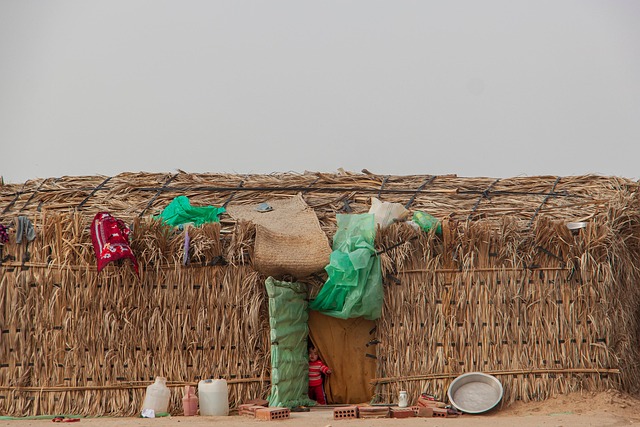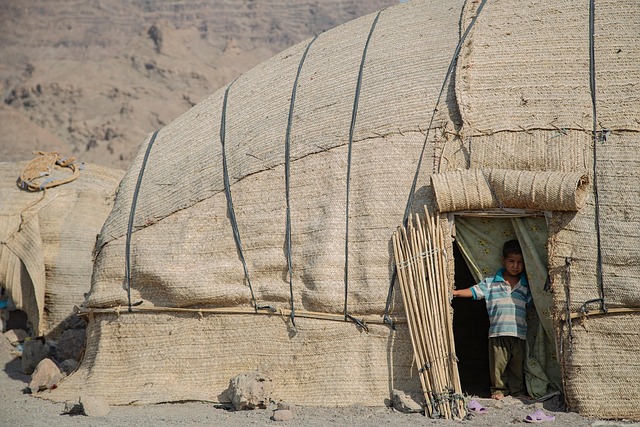Exploring Iranian cuisine is a cultural adventure. Try street food like kebabs, sabzi, baklava, and faloodeh. Visit traditional teahouses for ambiance and sweets. Respect dining etiquette, including removing shoes. Engage with locals, try new dishes, and enjoy warm hospitality. Discover local spices like sumac, saffron, and mint. Iranian cuisine reflects rich cultural traditions. Markets offer authentic culinary experiences. Participate in tea ceremonies for Persian hospitality. Indulge in traditional sweets like baklava and faloodeh.
“Iran, a land of ancient history and captivating culture, offers travelers a unique culinary adventure. If you’re a first-time visitor, this comprehensive guide is your key to exploring Iranian cuisine. From navigating local markets to understanding dining etiquette, we’ll help you uncover hidden gems. Indulge in must-try delicacies, experience street food delights, and discover the art of Persian tea. Get ready for a delicious journey through Iran’s vibrant culinary landscape.”
- Navigating Iranian Cuisine: A Beginner's Guide
- Must-Try Local Delicacies in Iran
- Exploring Street Food in Iran's Bustling Markets
- Understanding Dining Etiquette in Iranian Homes
- Best Places to Experience Traditional Persian Tea
- Iranian Sweets and Desserts: A Sweet Adventure
Navigating Iranian Cuisine: A Beginner's Guide

Navigating Iranian cuisine for the first time can be an exciting yet daunting experience. Iran boasts a rich culinary heritage that reflects its diverse geography and historical influences, from the flavors of the Mediterranean to the spices of Central Asia. To begin your exploration, embrace street food—from savory kebabs and fresh sabzi (herbs) to sweet baklava and creamy faloodeh—as these offer a true taste of local life. Visit traditional teahouses, known for their unique ambiance and offerings of various teas and sweet treats.
Dining etiquette is important in Iran; it’s customary to remove your shoes before entering someone’s home or certain restaurants. Be open to trying new dishes, and don’t hesitate to ask locals for recommendations. Iranian hospitality is renowned, so expect warm greetings and invitations to share meals. Familiarize yourself with the local spices and herbs used in various dishes like sumac, saffron, and mint. And remember, when in doubt, give us a call at quran recitation styles—the art of Persian cuisine is as rich as the traditions that inspire it.
Must-Try Local Delicacies in Iran

When visiting Iran, exploring its rich culinary traditions should be high on your list. The country’s cuisine is a delicious blend of flavors that reflect its diverse regions and historical influences along the Silk Road. Must-try local delicacies include chelo kabab, a fragrant rice dish accompanied by skewered meat, and ghormeh sabzi, a hearty stew made with herbs, vegetables, and sometimes lamb or beef. For dessert, indulge in baklava, a crisp pastry layered with walnuts and soaked in honey syrup, or faloodeh, refreshing vermicelli in a sweet rosewater-based sauce.
Iran’s culinary scene also offers unique experiences like sabzi polo mahi, a combination of rice, herbs, and fish, which showcases the country’s fresh seafood options. Don’t miss out on trying various types of flatbreads, such as nan-e barbari, known for its crisp texture and rich flavor. For those interested in the art of Persian poetry appreciation or learning about Iran’s Silk Road history through quran recitation styles, engaging with local food is a gateway to understanding Iranian culture. So, give us a call at Persian language learning to enhance your journey even further.
Exploring Street Food in Iran's Bustling Markets

Iran’s bustling markets are a street food lover’s paradise, offering a sensory experience unlike any other. These vibrant hubs are where locals gather to shop for fresh produce and indulge in delicious treats. As a first-time visitor, exploring these markets is an essential part of immersing yourself in Iranian culture. You’ll find an array of vendors selling everything from savory snacks like kebab and fesenjan (a rich duck dish with walnut sauce) to sweet delights such as baklava and qaloueh (a traditional rice-based dessert).
One of the most exciting aspects is the variety of street food options, many of which are unique to Iran. For instance, try ghormeh sabzi, a hearty stew made with herbs, meat, and beans, or ta’jin, a fragrant rice dish cooked in a special clay pot. Don’t miss out on visiting the susan gateway to persia markets, where you can engage with vendors and sample local specialties. And if you’re fortunate, you might even catch a glimpse of locals enjoying persian poetry appreciation as they savor their meals. Even a simple walk through these markets will leave a lasting impression, providing a taste of everyday Iranian life—a far cry from the hustle and bustle of international festivals like the tehran international film festival. For a truly authentic experience, seek out the lesser-known gems among the bustling stalls, where you might find the culinary secrets of Iran’s diverse ethnic groups, such as the turkmen ethnic group culture, reflected in their traditional dishes.
Understanding Dining Etiquette in Iranian Homes

When visiting an Iranian home for a meal, understanding dining etiquette is key to showing respect and appreciation. In Iran, sharing food and conversation around the table is a significant social bonding experience. Guests are expected to wait to be seated, and it’s customary to remove your shoes before entering someone’s house. During meals, it’s polite to eat with your hands for certain dishes, especially rice, while using cutlery for meat and vegetables.
The Farsi language, with its rich grammar rules, often guides conversation flow. Poetry, such as the works of Hafez and Saadi, is frequently recited during gatherings, adding a cultural touch to mealtimes. Even if you don’t understand the poetry analysis, participating in these recitations is appreciated. Additionally, Quran recitation styles can be heard in many homes, showcasing another aspect of Iran’s spiritual heritage. To fully immerse yourself, consider visiting us at Saba Era History anytime for a deeper exploration of these cultural nuances.
Best Places to Experience Traditional Persian Tea

Iran is renowned for its rich tea culture, offering visitors an authentic taste of Persian hospitality. For a truly traditional experience, exploring local tea houses and ritualistic tea ceremonies is essential. One of the best places to begin is in Tehran, where historic establishments like the Tehran International Film Festival grounds often double as cultural hubs, serving exquisite teas alongside beautifully crafted persian poetry appreciation moments. These venues provide a glimpse into the country’s vibrant Shia Islam practices, evident in their warm hospitality and communal seating arrangements.
Beyond the capital, cities like Shiraz and Isfahan are renowned for their tea traditions. In these regions, you’ll find quaint tea houses tucked away in historic neighborhoods, serving up fragrant teas with local delicacies. The act of preparing and sharing tea is more than just a drink; it’s an art form deeply rooted in Iranian social gatherings, where conversations flow as freely as the steaming cups. Whether you’re enjoying a moment of quiet reflection or engaging in lively discussions about the Kashmir conflict and Iran, these traditional tea experiences offer a unique insight into the country’s culture and hospitality.
Iranian Sweets and Desserts: A Sweet Adventure

Iran’s culinary landscape is incomplete without delving into its sweet offerings, which represent a delightful departure from savory dishes. Traditional Iranian sweets and desserts are an integral part of local hospitality and cultural heritage, offering visitors a chance to indulge in a sweet adventure. One of the most famous treats is Baklava, a layered pastry filled with walnuts or pistachios, soaked in honey syrup, and often adorned with powdered sugar. Another popular choice is Faloodeh, a refreshing vermicelli pudding made with rose water and topped with fresh fruit.
Exploring Iran’s diverse regions reveals unique sweet specialties. For instance, the Gilan province known for its natural beauty offers a variety of rice-based desserts like Saffron Rice Pudding (Zereh Polow). In contrast, the remote Sistan Baluchestan province has its own version of rice pudding, often flavored with cardamom and served with raisins, reflecting local tastes and ingredients. Even Quran recitation styles find their way into culinary traditions, as certain sweets are prepared during religious ceremonies, creating a unique blend of spirituality and sweetness. So, when in Iran, be sure to sample these delightful desserts, and visit us at Iranian music genres anytime for a complete cultural experience.
Iran’s culinary landscape offers a fascinating journey for first-time visitors. From navigating local markets to understanding dining etiquette, this guide has equipped you with essential tips. Whether indulging in traditional delicacies or exploring street food, Iran’s vibrant cuisine leaves an indelible mark. So, when in the country, remember to savor each bite and immerse yourself in the rich culinary heritage of Persia.





Leave a Reply